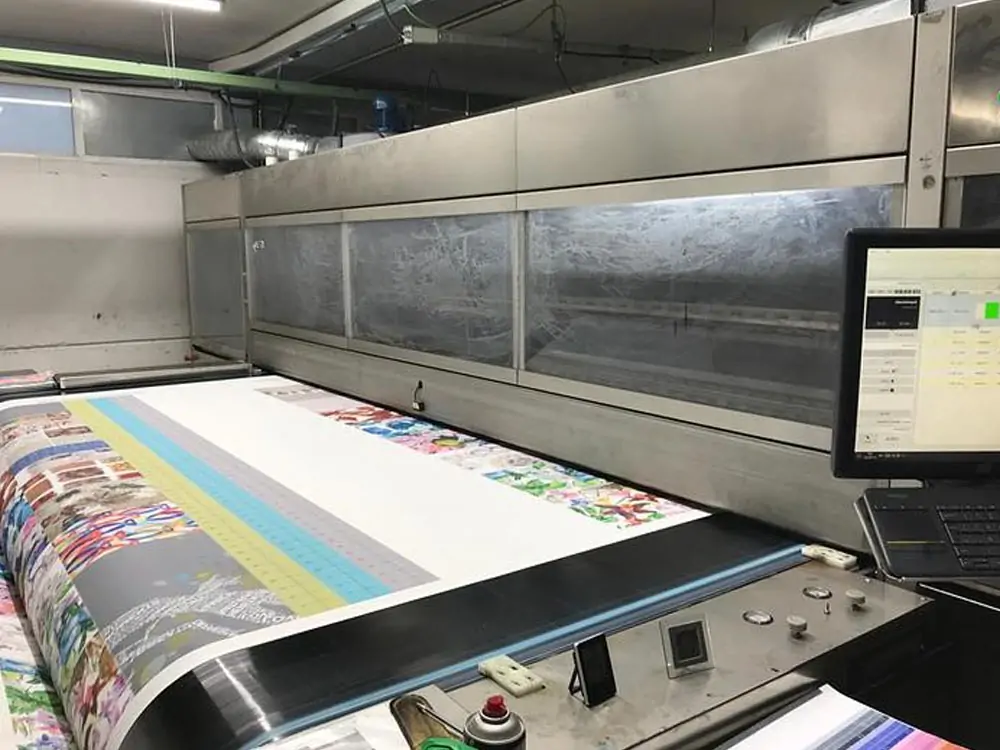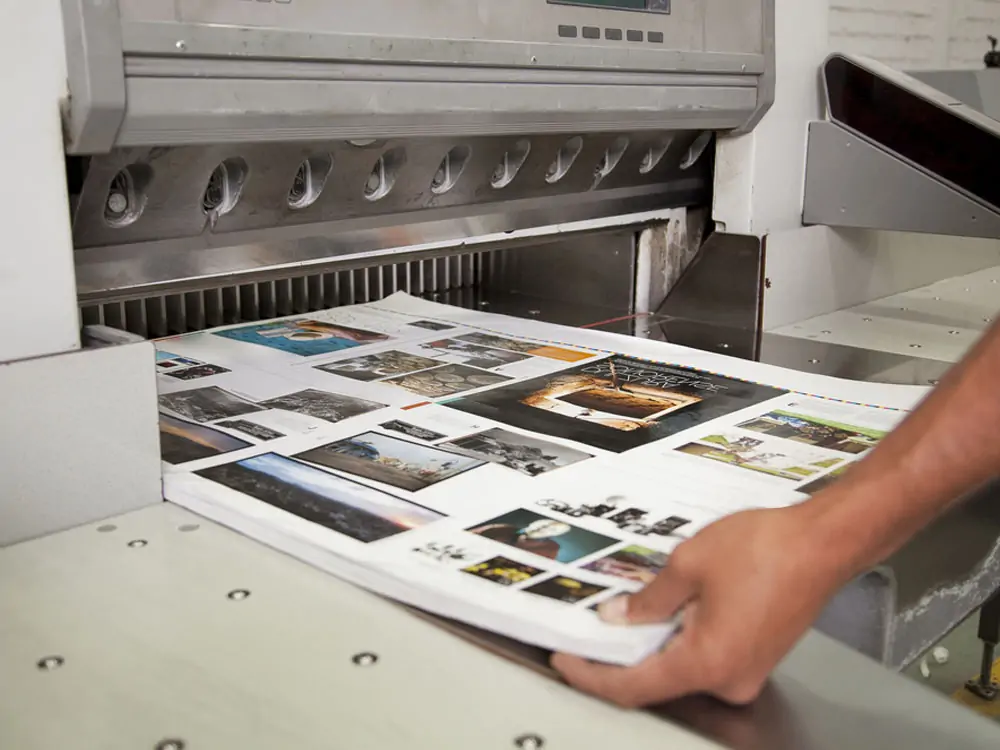In printing, the choice of materials determines the quality and efficiency. This is where the final product is quality and efficiency matters. Whether operating a small desktop printer or a large industrial press, the materials you use have a significant impact on the outcome. The importance of printing machines depends on the materials used. Other factors are also considered when selecting the best ones.
The Role of Materials in Printing
Materials are the main products for any printed item. This includes a simple document, a complex brochure, or a vibrant poster. They encompass a wide range of elements. They vary from the substrate (the material printed on) to the inks and toners used for the actual printing. The choice of materials influences several key aspects of the printing process, including:
1. Print Quality
Materials type and quality used can affect some crucial outcomes. This includes clarity, color vibrancy, and appearance of the printed output. Poor-quality materials may result in smudging, bleeding, or faded prints.
2. Durability
Durability can be a crucial factor. This is depending on the intended use of the printed materials. Packaging materials need to withstand wear and tear. Indoor posters may not need the same level of durability.
3. Cost Efficiency
Selecting the right materials can also impact cost efficiency. Some materials may be more expensive initially. These materials save money in the long run by reducing waste or improving print speed.
4. Environmental Impact
In today’s conscious world, the choice of materials also has implications for sustainability. Environmental-friendly materials can help reduce the carbon footprint of your printing operations.

Types of Materials Needed For Printing Machines
Substrates —— Paper
Paper is one of the most common substrates used in printing, and it comes in various types and weights. The choice of paper can significantly affect the final product. Here are some common paper types:
- Bond Paper: This is the standard paper used for everyday printing. It is suitable for documents, letters, and reports.
- Coated Paper: Has a smooth, glossy finish. It is ideal for high-quality printing, such as brochures, flyers, and photographs.
- Cardstock: Cardstock is a thicker and more rigid paper. It is often used for business cards, postcards, and invitations.
- Newsprint: Newsprint is lightweight and is commonly used for newspapers and other publications.
- Specialty Papers: These include textured papers, metallic papers, and other specialty options. These usually add unique effects to the prints.
Other Substrates
Paper is the most common substrate. Printing machines can also work with other materials, including:
- Plastic: Printing on plastic is commonly used for labels, packaging, and signage.
- Fabric: Textile printing is popular for creating custom clothing, banners, and promotional materials.
- Metal: Metal printing is utilized for applications like signage, nameplates, and industrial labels.
- Inkjet Inks: Inkjet printers are widely used in homes and offices. They typically use two main types of ink:
- Dye-Based Inks: Dye-based inks are known for their vibrant colors. They are also ideal for photo printing. However, they may fade over time when exposed to light and environmental factors.
- Pigment-Based Inks: Pigment-based inks are more durable and resistant to fading. This makes them suitable for documents and graphics that need to stand the test of time.
- Laser Toners: Laser printers use toner cartridges instead of liquid inks. There are two primary types of toners:
- Toner Powder: This is the traditional type of toner used in laser printers. It consists of tiny particles of dry powder.
- Liquid Toner: Liquid toner is less common. It is typically found in high-end color laser printers. It offers improved color accuracy and vibrancy.

Considerations For Selecting Materials
Printing is a diverse field. Selecting the right materials is an aspect of achieving successful and effective print. Whether printing documents, marketing, or packaging, a proper approach to material selection impacts the quality, cost, and sustainability of these print projects.
1. Print Technology
Different printing technologies need specific materials. Inkjet printers and laser printers have distinct requirements for substrates and inks. Compatibility between materials and the chosen print technology stands as a pivotal consideration. This is in the printing world. Different printing technologies have distinct requirements and constraints. Understanding how your chosen materials align with your printer’s technology is important. This enhances the achievement of optimal results.
Here’s a brief overview of some common printing technologies and their material considerations:
- Inkjet Printing: Inkjet printers use liquid ink. It’s crucial to choose materials that absorb ink without excessive smudging or bleeding. Specialized inkjet paper is often recommended for optimal results.
- Laser Printing: Laser printers, on the other hand, use dry toner powder. They require materials that can withstand the heat and pressure of the fusing process. Heat-resistant paper or transparencies are common choices for laser printing.
- Offset Printing: Offset printing is commonly used for high-volume projects. This typically involves the use of printing plates and water-based inks. The choice of paper or other substrates should be compatible with these inks and the printing press.
- 3D Printing: 3D printing relies on materials such as filaments, resins, or powders. This depends on the specific technology. Material selection directly impacts the strength, texture, and appearance of the 3D-printed object. Refer to the manufacturer’s guidelines and recommendations always. Ensure specific printer models to ensure compatibility with the chosen materials.
2. Application
Consider the intended use of the printed materials. Are they for short-term or long-term use? Will they be exposed to outdoor elements or kept indoors? These factors will impact your choice of materials. One of the most critical considerations when selecting materials is the intended application. This is applying the printed materials for the right purpose. Understanding how the materials align with the specific use case is instrumental. Whether producing, marketing collateral, packaging, or personal projects. This is to ensure achieving your desired results.
Consider the following questions to determine the most suitable materials for your application:
What is the purpose of the print job? Are you printing documents for internal use? Promotional materials for marketing campaigns, packaging for products, or something else entirely?
Is it for indoor or outdoor use? Materials used for outdoor signage or labels need to be more durable. They need to be more weather-resistant than those used for indoor documents.
Will the printed materials be subject to special conditions? For instance, packaging materials must protect products from damage. During transit and storage materials need to be sturdy and protective.
How long do the printed materials need to last? Consider whether the prints are for short-term or long-term use. Marketing materials for a one-time event may have different material requirements to documents intended for archival purposes.
Understanding the specific application of your printed materials can tailor material choices. This helps to meet functionality and longevity.
3. Budget
Your budget is a crucial factor. High-quality materials and inks often come at a higher price point. Thus, it’s essential to strike a balance between quality and cost. Balancing quality and cost is an act that requires proper decision-making. This ensures that your printing project aligns with your financial resources.
Material selection in printing involves a myriad of options. Each material with its associated costs. Premium materials may promise exceptional quality. These often come with a higher price tag. Conversely, more budget-friendly options might meet your financial constraints. But this could potentially compromise the quality of the final product. Striking the right balance is essential. This is to ensure that your printing project delivers. The desired results are important without exceeding your budget.
4. Sustainability
As sustainability becomes increasingly important, opt for eco-friendly materials and inks whenever possible. Look for products that are certified by organizations. These include the Forest Stewardship Council (FSC) or carry other relevant eco-labels.
In today’s environmentally conscious world, sustainability has become a paramount consideration. In nearly every aspect of our lives, this is important. This also includes the printing industry. Always ensure the right choice of materials. Materials for printing can have a significant impact on the environment. This means good choice of material increases sustainability.
5. Compatibility
Ensure that the materials you select are compatible with your specific printing machine. Using the wrong materials can lead to jams, poor print quality, and potential damage to your printer. When you start printing, it’s crucial to ensure that the materials you pick work well with your printer. Failing to do this can cause problems like paper jams and damage to your printer. So, following compatibility guidelines is a must when choosing materials. Thus, understanding and adhering to compatibility guidelines is a non-negotiable

Conclusion
In the realm of printing machines, the choice of materials is paramount. The substrates, inks, and toners you select can make or break the quality and effectiveness of your printed materials. Whether you’re printing documents, promotional materials, or packaging, understanding the importance of materials and making informed choices can help you achieve the desired results efficiently and cost-effectively. So, next time you fire up your printing machine, remember that the materials you choose are the foundation of your print success.
